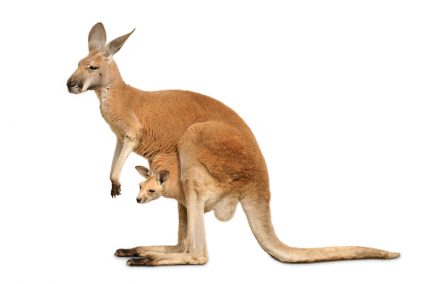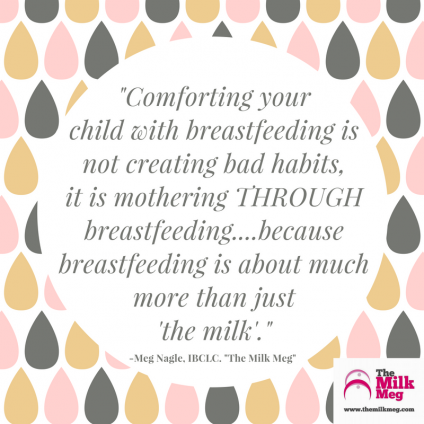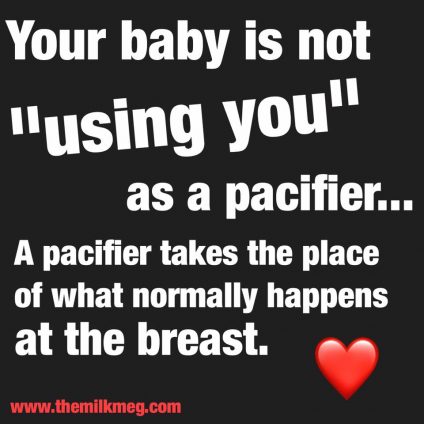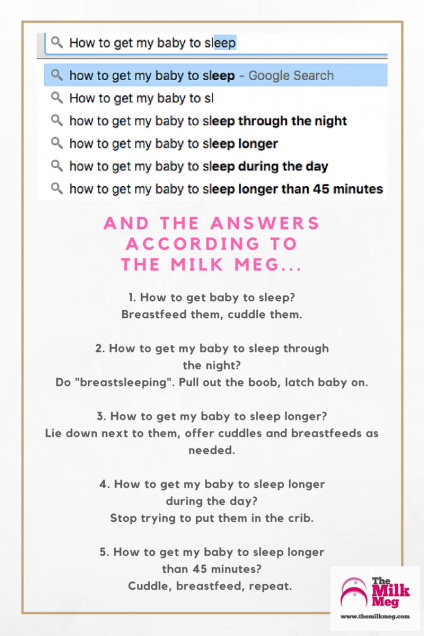
Maybe it’s because she lives in Australia, but Meg Nagle, the Milk Meg, appears to believe that mothers are marsupials.
Human beings, like nearly all mammal species, are placentals. We have relatively long pregnancies during which we nourish our young through the placenta. The placenta is a complex organ that allows for indirect communication between the baby’s bloodstream and the mother’s bloodstream. The baby gets its oxygen and nutrients, not to mention antibodies, from the mother’s circulation and dumps its carbon dioxide and waste products back to her for processing and removal.
[pullquote align=”right” cite=”” link=”” color=”” class=”” size=””]If you want to mother like a marsupial, go for it! But don’t judge other mothers for refusing to imagine they are marsupials, too.[/pullquote]
The marsupials (like kangaroos) do not have a complex placenta and have a very different gestational process.
According to Wikipedia:
An infant marsupial is known as a joey. Marsupials have a very short gestation period (about four to five weeks), and the joey is born in an essentially fetal state. The blind, furless, miniature newborn, the size of a jelly bean, crawls across its mother’s fur to make its way into the pouch, where it latches onto a teat for food. It will not re-emerge for several months, during which time it develops fully…
A marsupial joey is unable to regulate its own body temperature and relies upon an external heat source. Until the joey is well-furred and old enough to leave the pouch, a pouch temperature of 30–32 °C (86–90 °F) must be constantly maintained.
In other words, a human baby relies for gestational growth on the placenta and uterus. A joey relies on the teat and the pouch. A human baby is born far more developed than a joey, and although it cannot care for itself, it can be successfully cared for by the father, siblings and members of the extended family. A joey can only be cared for by its mother.
But lactivists like The Milk Meg prefer to imagine human infants as marsupials with the teat, in this case the breast, serving as the center of infant existence.
A joey must, for itself survival, maintain continuous contact with the teat for months. A joey, because it cannot maintain its own body temperature, must stay within the embrace of its mothers pouch for a year or more. For both these reasons a joey must sleep with its mother.
The Milk Meg insists that human babies have the same needs as joeys. This is expressed by her belief that human babies can and should be in continuous contact with the breast for years.
In this meme, for example, Meg declares:

Comforting your child with breastfeeding is not creating bad habits, it is mothering THROUGH breastfeeding … because breastfeeding is about much more than just milk.
Here Meg insists:

Your baby is not “using you” as a pacifier. A pacifier takes the place of what normally happens at the breast.
She is telling mothers that their breasts not merely ought to be used as pacifier, but are pacifiers.
Consider this advice on how to get your baby to sleep more:

Breastfeed them …
Do “breastsleeping.” Pull out the boob, latch baby on.
Offer cuddles and breastfeed as needed…
Cuddle, breastfeed, repeat.
In other words, let your baby attach to your breast and never let go … just like a marsupial.
Except humans are not marsupials.
Consider:
Joeys stay in the pouch for up to a year in some species, or until the next joey is born.
A mother kangaroo is usually has only one joey in her pouch at a time. Her older offspring are physically independent. But human children requires the care of their mothers for more than a decade. With the exception of the first child, a human mother is always caring for other children who need her just as much as the infant needs her. They too have physical and emotional needs that must be met in order to ensure optimal development.
Lactivism makes no provision for meeting the needs of older children (unless they want to breastfeed, too) and, of course, it makes no provision for meeting the physical and emotional needs of the mother beyond increasing and maintaining her ability to lactate.
What’s wrong with that?
Nothing so long as it is your choice to mother as a marsupial.
Where I disagree with Meg is in her insistence that human babies have the same needs as joeys do. I disagree with her conviction that good human mothering is the same as good marsupial mothering.
Human babies are placental mammals. They do NOT need to be attached to the breast. They do NOT need to use the breast as a pacifier. They do NOT need to be in constant physical contact with the mother. It is not merely untrue, but it is cruel to insist that human babies need to be treated like marsupials.
Why is it cruel?
Because human mothers aren’t marsupials, either. They have different needs, desires and demands on them than kangaroo mothers. It is cruel to tell women that their babies physical and emotional health depend on behaving like marsupials when it doesn’t; that belief requires sacrifices that, as placental mammals, we AREN’T designed (or evolved) to make.
If you want to mother like a marsupial, go for it!
But don’t judge other mothers for refusing to imagine they are marsupials, too.

